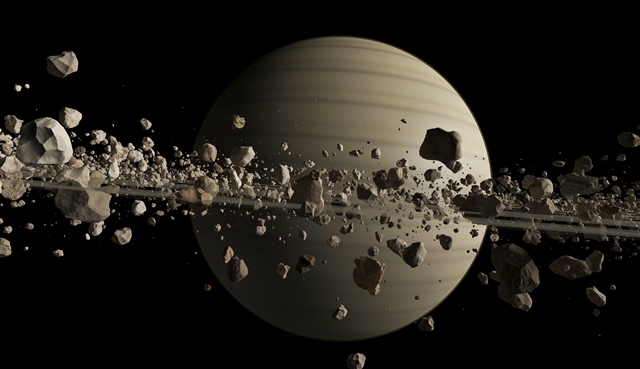Teens to track potential ‘killer asteroids’ during Summer Science Program at CU-Boulder

The asteroid research is the keystone project for students participating in the international Summer Science Program (SSP), established in 1959 to allow some of the best and brightest high school students to experience college-level education and do cutting-edge celestial mechanics research.
During the six-week program, the students will attend daytime lectures on astronomy, physics, calculus and software development. In addition, each team of three students will choose an asteroid, precisely measure its size and position, and write software to predict its future orbit around the sun, including its potential for colliding with Earth, said SSP Executive Director Richard Bowdon.
SSP will select and enroll the students, hire faculty and select guest lecturers for the program, while CU-Boulder will provide furnished housing, meals, classroom access and training and support services for use of the 16-inch and 18-inch telescopes at Sommers-Bausch Observatory and for computer labs.
“We’re very excited to come to Boulder,” said Bowdon, also an SSP alumnus and software engineer. “Everybody has been extremely supportive, and the facilities are perfect for our program, especially the telescopes right on campus.”
The program admits high-achieving students readying for their senior years in high school. One group of 36 students will be doing hands-on astronomy at the Sommers-Bausch Observatory on the CU-Boulder campus while a second group of 36 students will be at New Mexico Tech in Socorro.
“We see this as a tremendous opportunity to share the expertise of CU-Boulder's faculty and students and our telescope facilities with some of the best and brightest high school students anywhere,” said CU-Boulder Provost Russell Moore. “The Summer Science Program has been shown to be a life-changing experience for past students from around the world, and we hope the activities these students undertake at CU-Boulder will inspire them to go on in college to study science or engineering."
CU-Boulder Senior Instructor Douglas Duncan, director of Fiske Planetarium and a former SSP student and instructor, said the program was created shortly after the Russians launched Sputnik and was the only U.S. summer science program at the time targeting very successful high school students. “It’s like a Junior Olympic training camp, but in academics,” said Duncan, who also is on the SSP Board of Trustees.
In addition to CU-Boulder and New Mexico Tech, the SSP is operated in cooperation with both Caltech and the Massachusetts Institute of Technology, which help in areas of student recruitment, guest speakers and alumni support. About half of the SSP students currently go on to enroll at MIT, Caltech, Harvard University and other Ivy League schools.
The program, which regularly features top scientists and engineers as lecturers and guest speakers, including Nobel Prize winners, is the only summer enrichment program managed and largely funded by its own alumni, said Bowdon. Last year there were 754 applicants for the 72 student slots available. More than 100 professional astronomers or physicists have been associated with SSP, either as faculty, students or both.
CU-Boulder’s extensive experience in space science research and education makes it a good fit for SSP, said Moore. CU-Boulder has built and launched instruments to every planet in the solar system, designed a $70 million instrument now flying on the Hubble Space Telescope, is leading NASA’s $671 million MAVEN mission to Mars and hosts the Colorado Space Grant Consortium, which has given hundreds of undergraduates experience in designing, building and flying space instruments.
For more information on SSP, including fees and financial aid opportunities, visitwww.summerscience.org. For more information on CU-Boulder’s Sommers-Bausch Observatory visitsbo.colorado.edu.
Contacts
Contact:
Russell Moore, 303-492-5537
russell.moore@colorado.edu
Douglas Duncan, 303-735-6141
duncan@colorado.edu
Richard Bowdon, SSP, 919-439-7759
rbowdon@ssp.org
Jim Scott, CU-Boulder media relations, 303-492-3114
jim.scott@colorado.edu




